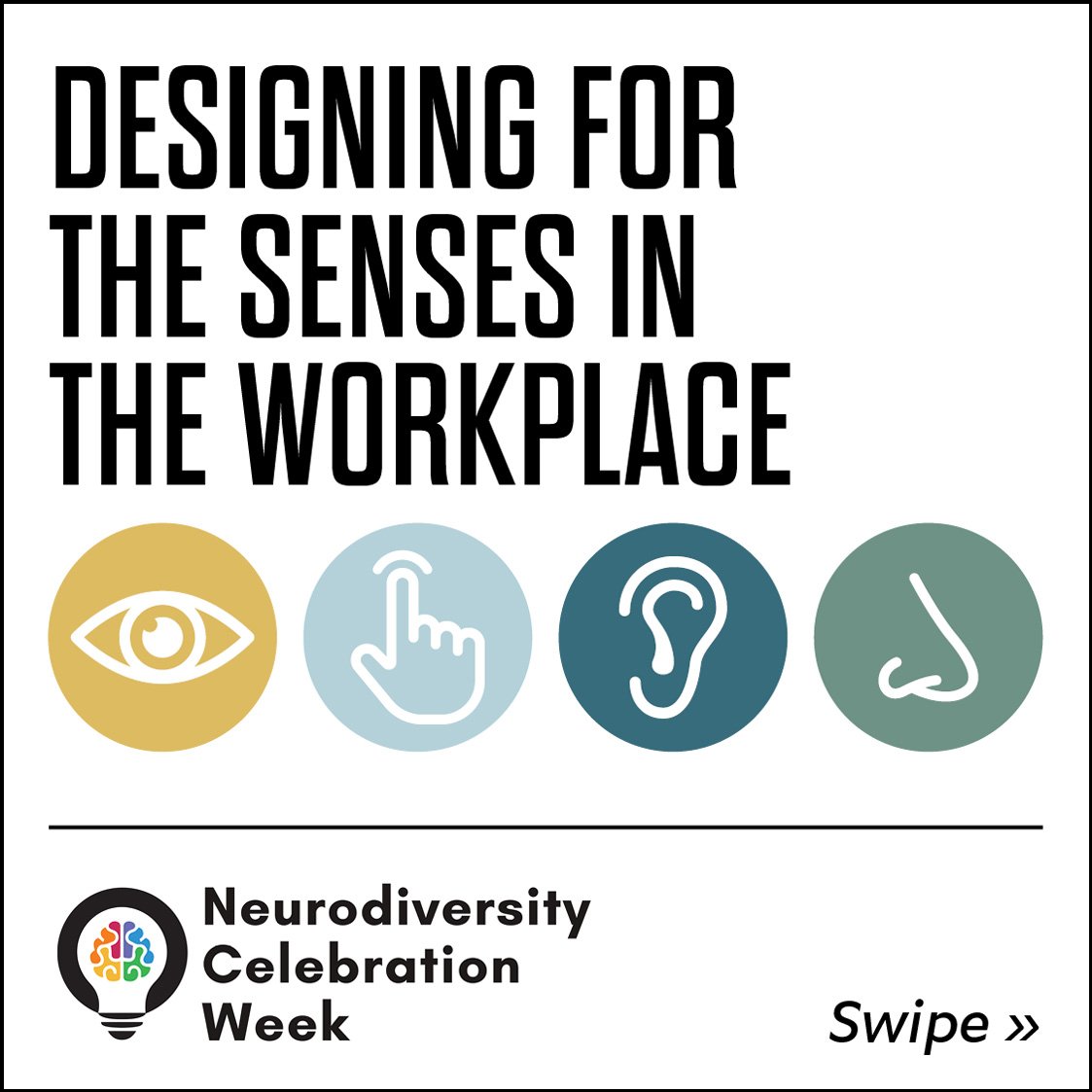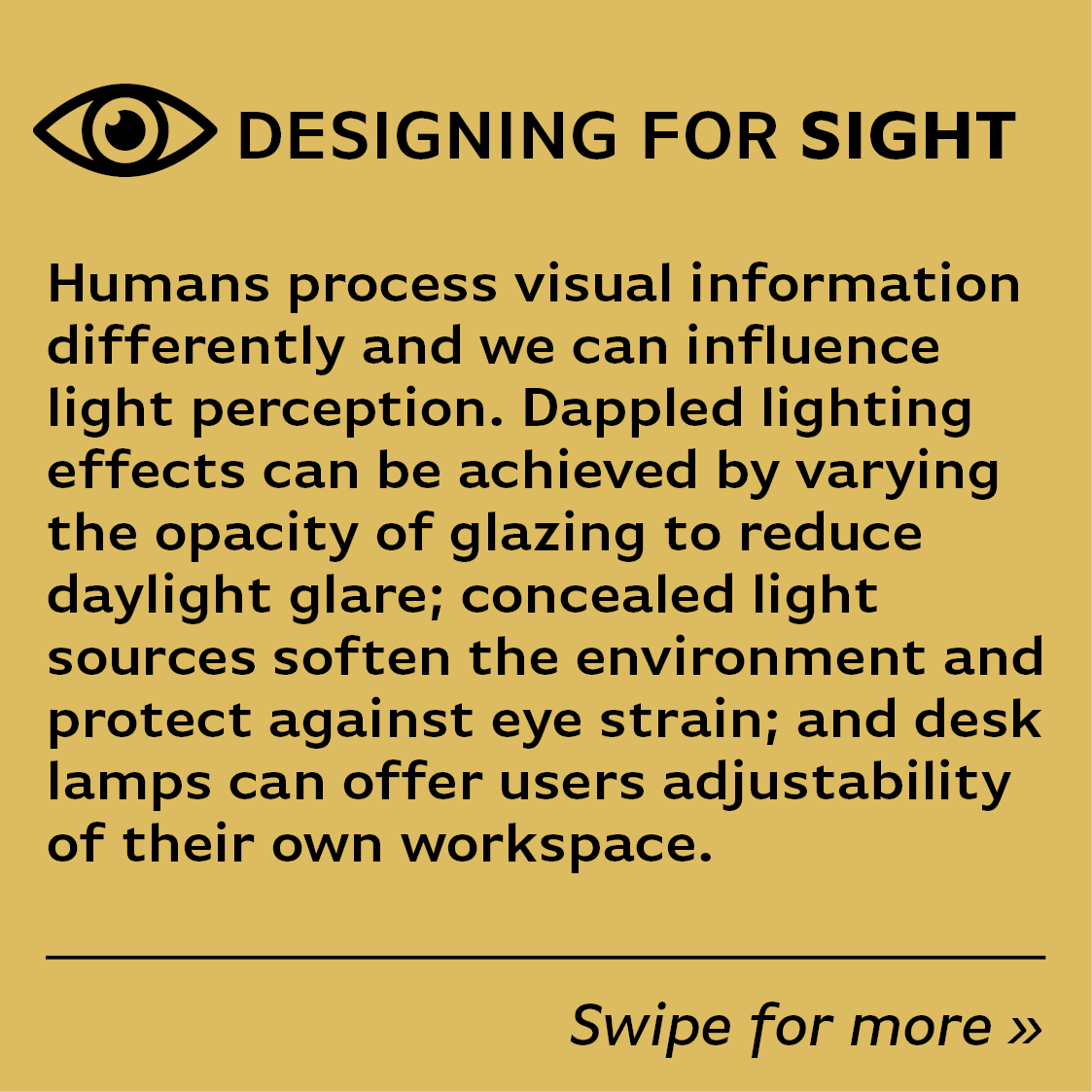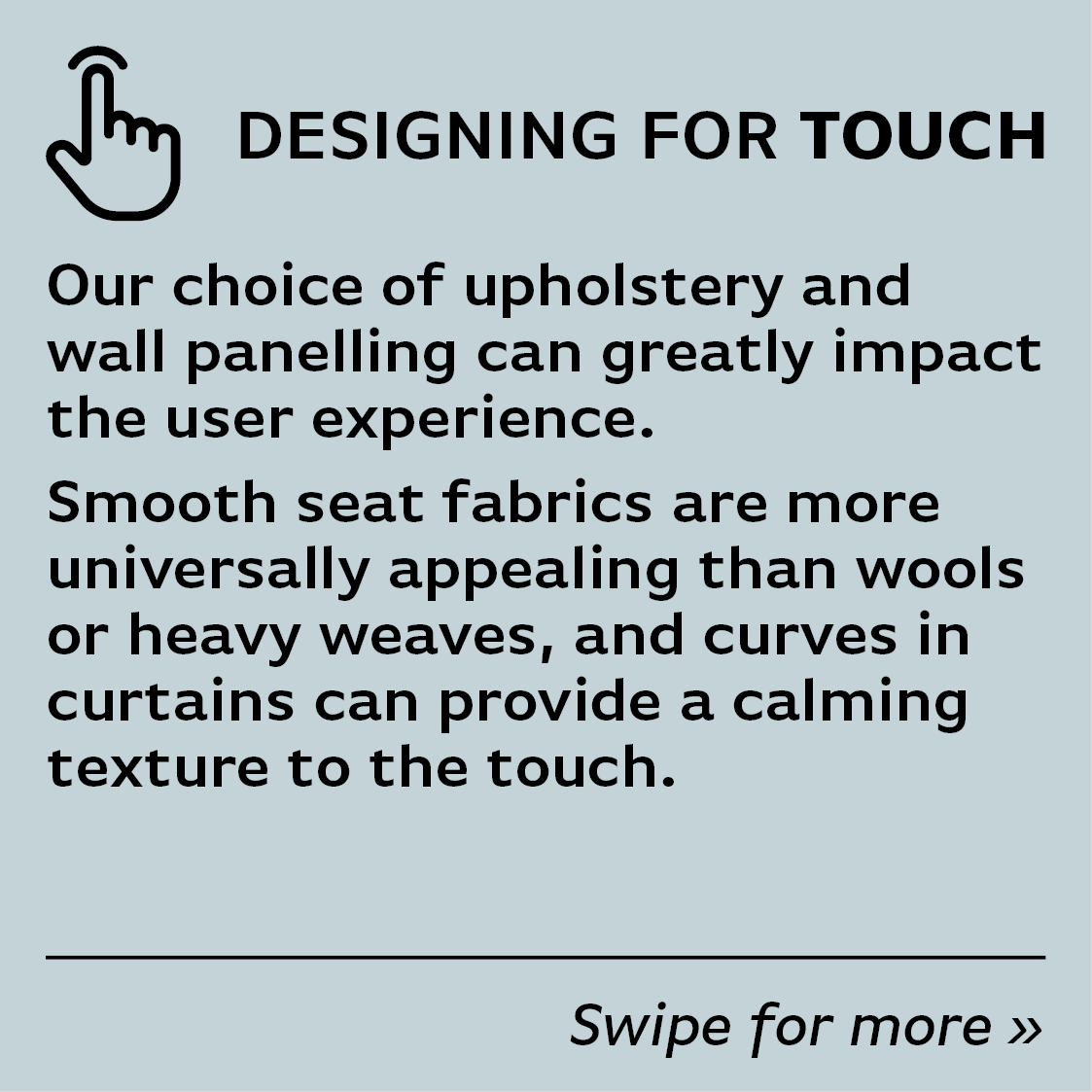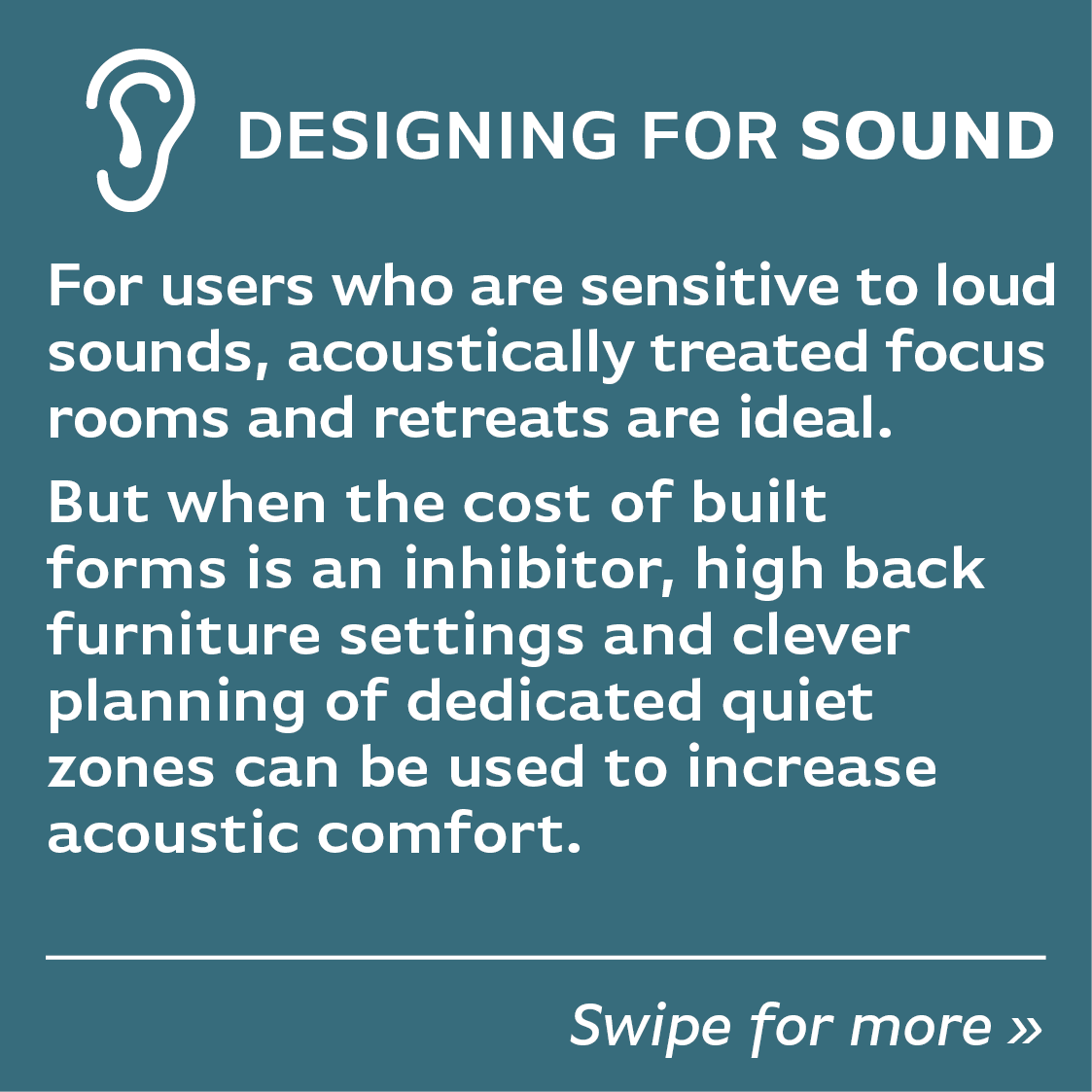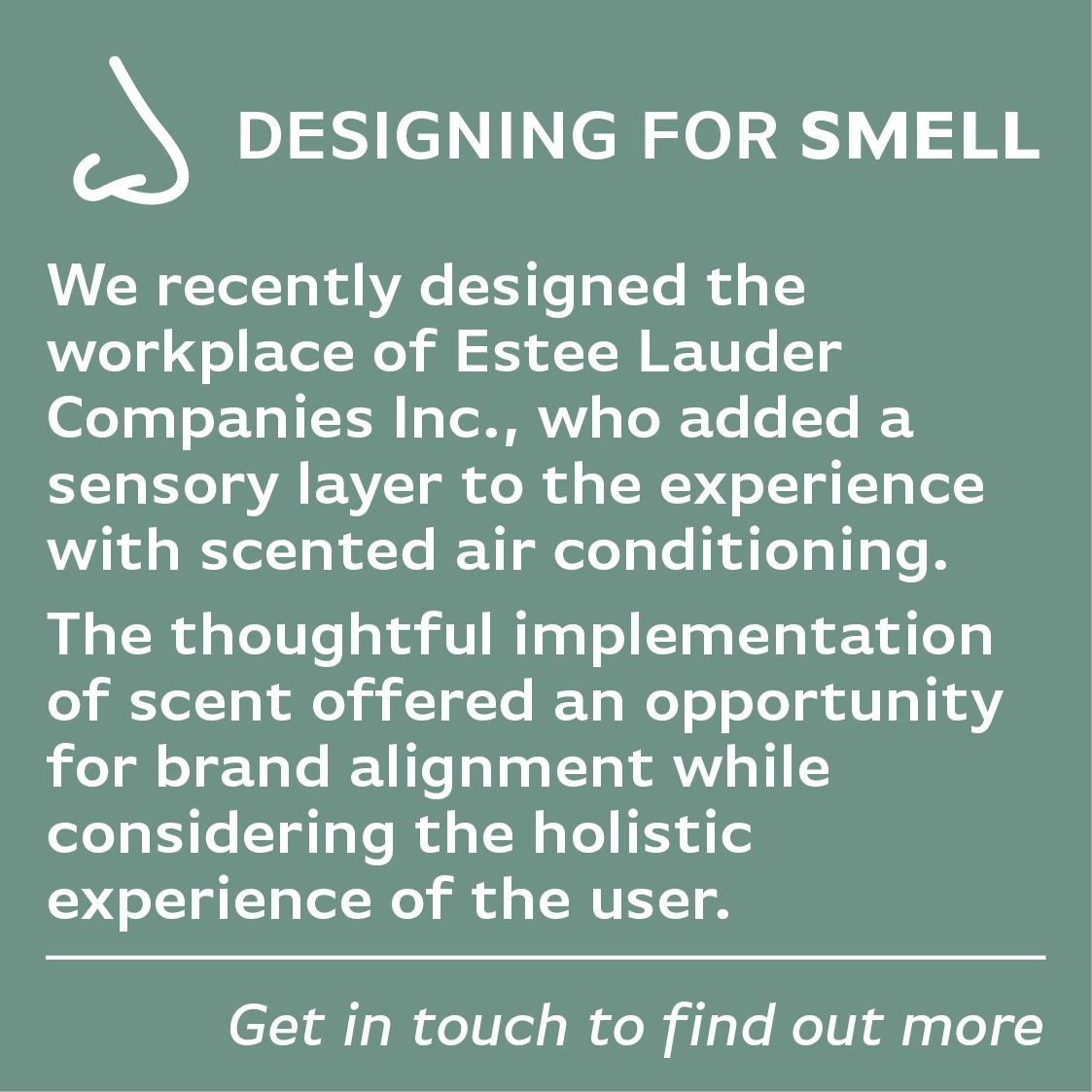CELEBRATING NEURODIVERSITY
We are constantly growing our understanding of what designing for neurodiversity means within the workplace. We are proud to work alongside our clients and celebrate diversity in talents and perspectives, creating settings that empower individuals and teams.
As designers we have the privilege of crafting spaces that appeal to the senses and impact user experiences. These spaces also have the opportunity to offer respite and balance amidst an ever increasing technology overlay. The diversity of our clients and their teams require us to design for a broad spectrum of needs relating to sensory experience.
DESIGNING FOR SIGHT
Humans process visual information differently and we can influence light perception. Dappled lighting effects can be achieved by varying the opacity of glazing to reduce daylight glare; concealed light sources soften the environment and protect against eye strain; and desk lamps can offer users adjustability of their own workspace.
DESIGNING FOR TOUCH
Our choice of upholstery and wall panelling can greatly impact the user experience. Smooth seat fabrics are more universally appealing than wools or heavy weaves, and curves in curtains can provide a calming texture to the touch.
DESIGNING FOR SOUND
For users who are sensitive to loud sounds, acoustically treated focus rooms and retreats are ideal. But when the cost of built forms is an inhibitor, high back furniture settings and clever planning of dedicated quiet zones can be used to increase acoustic comfort.
DESIGNING FOR SMELL
We recently designed the workplace of Estee Lauder Companies Inc., who added a sensory layer to the experience with scented air conditioning. The thoughtful implementation of scent offered an opportunity for brand alignment while considering the holistic experience of the user.
If you are interested in talking about what designing for neurodiversity means in your workplace, we’d love to hear from you.

